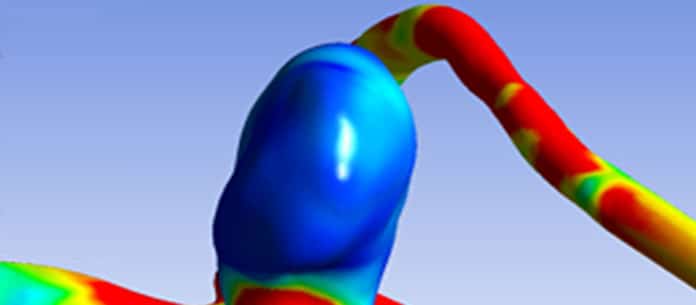A brain aneurysm is a bulge or ballooning in a blood vessel in the brain. It often looks like a berry hanging on a stem. Rupture of this aneurysm results in too severe and, in one-third of cases, fatal hemorrhage.
In the framework of the International Stroke Genetics Consortium, a team led by the University of Geneva (UNIGE), the University Hospitals of Geneva (H.U.G.), and the University of Utrecht is examining the hereditary determinants of aneurysms to all the more likely comprehend the various types of the infection and to assess individual risk. By determining the genome of more than 10,000 individuals experiencing aneurysms contrasted with that of 300,000 healthy volunteers, 17 genetic abnormalities have been recognized that are notably engaged with the vascular endothelium’s working, the inner lining of blood vessels.
Scientists also discovered a potential link between these genetic markers and antiepileptic drugs, making it possible to consider the use of certain drugs to manage the disease.
Philippe Bijlenga, Assistant Professor in the Department of Clinical Neurosciences at UNIGE Faculty of Medicine and Senior Consultant at H.U.G. Division of Neurosurgery, said, “It is essential to understand the genetic basis better – inherited or otherwise – governing the risk of developing the disease, but also to distinguish between the different forms of the disease and its severity. This will allow us to detect people at risk and offer them the most appropriate treatment.”
“This multipronged disease, whose evolution depends on genetic, congenital, and environmental factors, is indeed complex to apprehend. The tiny variations that make it up must, therefore, be deciphered.”
For the study, scientists studied the D.N.A. of more than 10,000 patients. They then compared the samples with that of 300,000 volunteers: eleven new genome regions – compared with six previously – were associated with the disease.
Ynte Ruigrok, neurologist and associate professor at the University Medical Center of Utrecht University, who co-led the study, said, “Each of these D.N.A. variations causes a slight increase in the risk of an intracranial aneurysm. Thus, their accumulation can, together, constitute a significant risk.”
Philippe Bijlenga said, “Most of these genetic abnormalities appear to be related to the functioning of the endothelial cells that line the inside of blood vessels and usually make them robust. These cells have long been suspected of being responsible for aneurysms. We now have evidence that leads us to work on possible markers of instability that could indicate whether the aneurysm is stable, healed, or at high risk of adverse outcomes.”
The study has shown that a genetic predisposition to high blood pressure and smoking plays an essential role in developing an intracranial aneurysm. If these risk factors were already known from a clinical and epidemiological perspective, we now have genetic evidence.
Philippe Bijlenga said, “We also made a surprising discovery: It appears that the protein structures of some of the genes we identified are linked to antiepileptic drugs. We do not yet know whether this effect is positive or negative. Still, it opens up the possibility for pharmacological treatments, potentially less invasive than the surgical approaches we are currently using.”
Scientists will now work on modeling the disease, both biologically and therapeutically, to offer physicians a medical decision support system that will help determine potential management protocols based on each person’s genetic data.
Journal Reference:
- Bakker, M.K., van der Spek, R.A.A., van Rheenen, W. et al. Genome-wide association study of intracranial aneurysms identifies 17 risk loci and genetic overlap with clinical risk factors. Nat Genet 52, 1303–1313 (2020). DOI: 10.1038/s41588-020-00725-7
